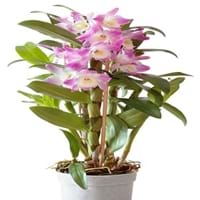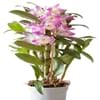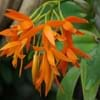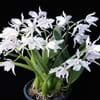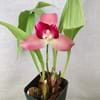Life Span
Perennial
Perennial
Origin
Southern Asia, Southeastern Asia
Europe, Eastern Europe, Northern Europe, Southern Europe, Western Europe, United Kingdom, Russia/Siberia, Mediterranean, Turkey, Northern Africa, Central Asia, Eastern Asia, Western Asia, India, Nepal, China, Japan, Korea
Types
Not Available
Bigleaf hydrangea, Hortensia, Smooth hydrangea, Oakleaf hydrangea, Annabelle
Number of Varieties
Not Available
Habitat
Subtropical climates
Forest edges, Hillside, Woods
USDA Hardiness Zone
12-15
5-9
AHS Heat Zone
Not Available
9*1
Sunset Zone
Not Available
Not Available
Habit
Clump-Forming
Weeping
Flower Color
White, Yellow, Gold, Light Pink
Yellow green
Flower Color Modifier
Bicolor
Not Available
Fruit Color
Non Fruiting Plant
Not Available
Leaf Color in Spring
Green, Dark Green
Light Green, Yellow green
Leaf Color in Summer
Green, Dark Green
Green, Yellow green
Leaf Color in Fall
Green, Dark Green
Green, Yellow green
Leaf Color in Winter
Green, Dark Green
Olive, Yellow green
Leaf Shape
Long Elliptic
Oblovate
Plant Season
Spring, Summer, Fall, Winter
Spring, Summer, Fall, Winter
Sunlight
Partial Sun, Partial shade
Full Sun, Partial Sun
Type of Soil
Not Available
Not Available
The pH of Soil
Acidic, Neutral
Not Available
Soil Drainage
Well drained
Not Available
Bloom Time
Early Spring, Late Winter
Early Spring, Spring, Late Winter
Tolerances
Cold climate, Heat Tolerance
Not Available
Where to Plant?
Container, Ground, Pot
Container, Ground
How to Plant?
Seedlings, Stem Planting
Seedlings, Stem Planting
Plant Maintenance
Low
Medium
Watering Requirements
Do not water frequently, Medium, Never Over-water, Water when top layer of soil becomes dry
Not Available
In Summer
Lots of watering
Average Water
In Spring
Moderate
Moderate
In Winter
Average Water
Average Water
Soil pH
Acidic, Neutral
Not Available
Soil Type
Not Available
Not Available
Soil Drainage Capacity
Well drained
Not Available
Sun Exposure
Partial Sun, Partial shade
Full Sun, Partial Sun
Pruning
Remove damaged leaves, Remove dead leaves
Remove damaged leaves, Remove dead branches, Remove dead leaves
Fertilizers
fertilize every 2-3 weeks while growing
All-Purpose Liquid Fertilizer
Pests and Diseases
Red blotch
Red blotch
Plant Tolerance
Drought
Not Available
Flowers
Showy
Insignificant
Flower Petal Number
Single
Single
Foliage Texture
Medium
Medium
Foliage Sheen
Matte
Matte
Attracts
Not Available
Birds
Allergy
Avoid during Pregnancy
Chest tightness, Diarrhea, Dizziness, Nausea, Vomiting
Aesthetic Uses
Beautification, Landscape Designing, Showy Purposes
Not Available
Beauty Benefits
Good for skin and hair
Not Available
Edible Uses
Yes
Not Available
Environmental Uses
Air purification, Food for insects
Air purification
Medicinal Uses
Cough, Fever, Immunity, tuberculosis, Vomiting
Fever, Kidney problems, Urinary tract problems
Part of Plant Used
Flowers, Leaves, Stem
Flowers, Root
Other Uses
Can be made into a herbal tea, Decoration Purposes, Showy Purposes, Used as Ornamental plant, Used for its medicinal properties
Not Available
Used As Indoor Plant
Yes
Not Available
Used As Outdoor Plant
Yes
Yes
Garden Design
Container, Hanging Basket, Houseplant, Rock Garden / Wall, Tropical
Not Available
Botanical Name
DENDROBIUM farmeri
VISCUM album
Common Name
Dendrobium, Farmer's Dendrobium, Sentinel Orchid
European Mistletoe
In Hindi
Dendrobium
Hydrangea
In German
Dendrobium
Hortensie
In French
Dendrobium
Hortensia
In Spanish
dendrobium
Hortensia
In Greek
Dendrobium
υδραγεία
In Portuguese
dendrobium
Hortênsia
In Polish
Dendrobium
Hortensja
In Latin
dendrobium
Hibiscus
Phylum
Magnoliophyta
Not Available
Class
Liliopsida
Not Available
Order
Asparagales
Not Available
Family
Orchidaceae
Viscaceae
Genus
Dendrobium
Not Available
Clade
Angiosperms, Monocots
Not Available
Tribe
Podochileae
Not Available
Subfamily
Epidendroideae
Not Available
Number of Species
Not Available
Importance of Dendrobium and European Mistletoe
Want to have the most appropriate plant for your garden? You might want to know the importance of Dendrobium and European Mistletoe. Basically, these two plants vary in many aspects. Compare Dendrobium and European Mistletoe as they differ in many characteristics such as their life, care, benefits, facts, etc. Every gardener must at least have the slightest clue about the plants he wants to plant in his garden. Compare their benefits, which differ in many ways like facts and uses. The medicinal use of Dendrobium is Cough, Fever, Immunity, tuberculosis and Vomiting whereas of European Mistletoe is Fever, Kidney problems and Urinary tract problems. Dendrobium has beauty benefits as follows: Good for skin and hair while European Mistletoe has beauty benefits as follows: Good for skin and hair.
Compare Facts of Dendrobium vs European Mistletoe
How to choose the best garden plant for your garden depending upon its facts? Here garden plant comparison will help you to solve this query. Compare the facts of Dendrobium vs European Mistletoe and know which one to choose. As garden plants have benefits and other uses, allergy is also a major drawback of plants for some people. Allergic reactions of Dendrobium are Avoid during Pregnancy whereas of European Mistletoe have Chest tightness, Diarrhea, Dizziness, Nausea and Vomiting respectively. Having a fruit bearing plant in your garden can be a plus point of your garden. Dendrobium has no showy fruits and European Mistletoe has showy fruits. Also Dendrobium is not flowering and European Mistletoe is not flowering . You can compare Dendrobium and European Mistletoe facts and facts of other plants too.
